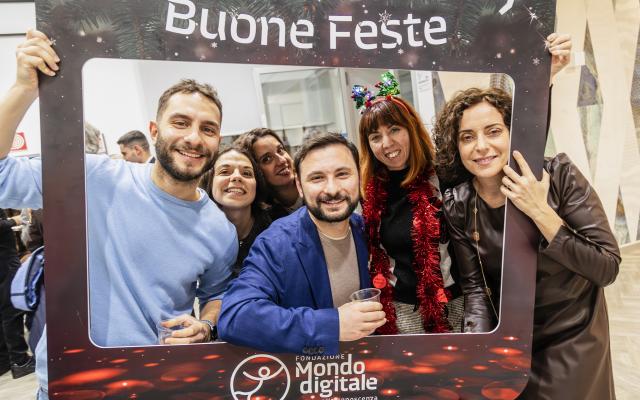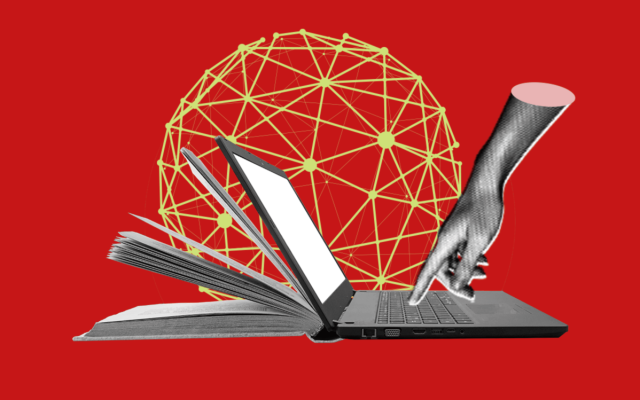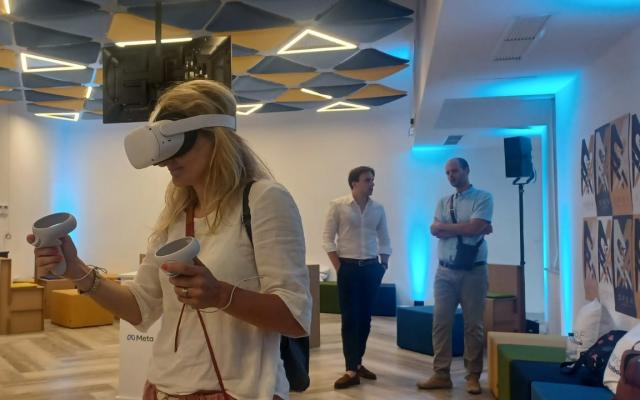Quest 2 visors at the SIMMED National Congress in Genoa
National Congress of the Italian Society of Simulation in Medicine (Genoa, October 12-13), we organized an experiential training session in the metaverse (see the news Digital Twins and Virtual Hospitals). Here is a brief account of the various speakers prepared by Riccardo Russo.
Pier Luigi Ingrassia, President of the Italian Society of Simulation in Medicine (SIMMED): this initiative perfectly suits our mission to create a more reliable and safe healthcare system. The use of technologies such as the metaverse allows current and future professions to gain useful experience for their daily work. Today is the first stage of a journey that involves the Fondazione Mondo Digitale, Meta, Simmed and Simm (Italian Society of Leadership and Management in Medicine) and which aims to raise literacy and awareness throughout the scientific and academic community. Let us always remember that training is only the means, the end is our safety and that of our community.
Elisa Amorelli, Communications, Institutional Relations, and Social Marketing Coordinator, Fondazione Mondo Digitale: social innovation and digital literacy for all citizens are at the basis of the work of the Fondazione Mondo Digitale. Our goal is to understand how technology can provide an opportunity for all citizens in their daily lives.
Costanza Andreini, Public Policy Manager Italy at Meta: technological development, as well as immersive and mixed reality, can help us do more and better, without forgetting the physical nature of our relationships and our lives. In the medical field, progress is incredible: doctors must have a critical eye for what is happening, and Meta is here to help them. Technology can improve the transmission of information and knowledge, especially experimentation in a safe environment.
Nicola Gentili, Member of the Executive Committee of the Italian Society of Leadership and Management in Medicine (SIMM): we work on the value of healthcare at the centre of our community and support the access to care. We are interested in understanding the metaverse and are convinced that it is a great opportunity that opens up important perspectives, especially for the sustainability of the Italian public healthcare system. We must not use the metaverse as an alternative to current tools, it has its own characteristics and peculiarities and should be used to create new activities in the healthcare sector.
Gianluca Polegri, Director of the Digital Channels Management Engineering Division: it is not so easy to understand what is behind the metaverse, especially because at the beginning it had a purely consumerist declination. The first examples are in fact linked to the world of gaming. The metaverse is a living environment that builds a story, it is the union of different technologies that contribute to creating a world similar to the real one, but which offers more opportunities than traditional digital services. From a professional point of view, there is a strong interest in these topics. For the world of healthcare, for example, it allows the development of a series of additional solutions compared to consolidated applications: savings in terms of economic efficiency and physical transfers, everyone being in the same physical environment at the same time, creating simulations to reduce risk and maximize the training of people working in the field.
Lorenz Toniolo, Training Projects Manager, Nume Plus SRL: our SimX application allows users to simulate, reproducing reality, a healthcare environment, such as an ambulance. We thus have the possibility to monitor and visit the virtual patient, order drugs to study their reactions, or modify the patient's blood pressure to define ever new scenarios.
Luca Angeli, Head of Global Sales, UpSurgeOn: our work is to drive medical and surgical training. To date, this type of training can be done either on cadavers or on patients and both of these scenarios have significant logistical problems. What we try to do is to add the element of reasoned and mediated simulation between physical reality, that of the metaverse and augmented reality space.
Brainstorming
Luisa Zoda, Coordinator, CEMEDIS Simulation Centre of CEFPAS - Sicilian Region: I have tried the technology and I think it would be useful to use maxi-emergency scenarios to save, especially in terms of resources. I was struck by the fact that four operators can interact in the same scenario.
Luca Tortorolo, Coordinator, Tree Simulation Center: I wonder how flexible these scenarios are and how much they are predetermined and therefore what possibilities there are for modifying them.
Lorenz Toniolo, Training Projects Manager, Nume Plus SRL: whoever sets a scenario can decide between pre-defined patient states. In the case of virtual mannequins, for example, the vital parameters can be customized. There are obvious limitations regarding, for example, laboratory tests, but further customization will soon be possible.
Emanuele Capogna, Simulation Manager, Researcher and EESOA Train-the-Trainer, Rome Maternity and Neonatal Care Simulation Centre: the first thing that came to mind is the level of safety guaranteed with the use of visors.
Lorenz Toniolo, Training Projects Manager, Nume Plus SRL: the ideal scenario is certainly the 1:1 spatial reproduction, which faithfully reproduces real scenes.
Luca Angeli, Head of Global Sales, UpSurgeOn: the metaverse allows you to interact between various specialties. We collaborate with several multinational companies, where this concept is amplified, so that they can create communities of operating rooms, the operator of the same case has a community that can assist him thanks to the metaverse.
Pier Luigi Ingrassia, President of the Italian Society of Simulation in Medicine (SIMMED): the digital world and virtual devices have now become common practice in the healthcare environment. They are in a certain sense "invading" it. In the future, they will be used more and more intensively for practical applications. As those who use these technologies for training, we must learn to use them well. The final invitation, therefore, is to train ourselves “ad hoc” on them. They must not replace training but integrate it.




